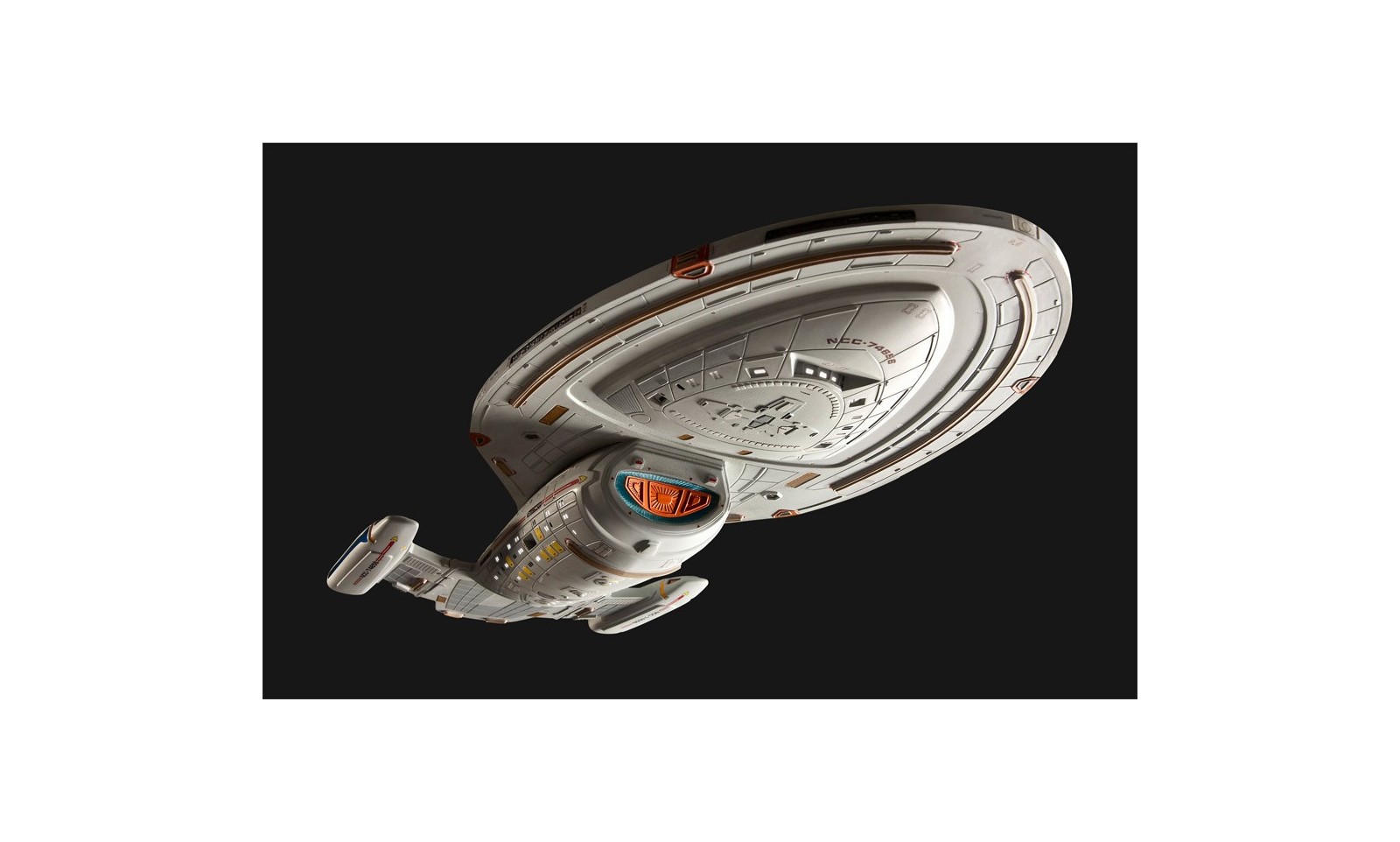
Preliminary hull cross-sections were drawn in blue pencil, to check different internal deck heights, total number of decks, and possibly overall ship length.ĭuring April and May of 1994, the first real sense of the new starship emerged.

Not surprisingly, this exercise was repeated in greater detail with each new approved version of the hull. Even in the rough sketches, a lot of design ideas got worked out, concerning placement of familiar items like impulse engines and phasers. Variations filled more paper as the proportions of different parts changed, pieces were added and subtracted, and hull contours, both gently curved and angular, were explored in perspective.

Later on, it was decided that Voyager would be able to land on a planetary surface, requiring deployable landing gear and other arrangements of resting-on-hull components to be sketched out. Sternbach's early sketches had Voyager as a streamlined, dart-like primary hull, with a flattened, elongated engineering hull, sporting swept-back runabout-like warp pylons.
#Voyager star trek model series
Star Trek producers had already begun to plan for a new series set on a smaller starship than the Enterprise-D, but instead of waiting for more clarification, Rick Sternbach immediately started making sketches of this unnamed vessel.

The earliest concepts for Star Trek: Voyager came in September 1993, during the last season of Star Trek: The Next Generation and the second season of Star Trek: Deep Space Nine. 4.1 Derivative ship class studio modelsĬoncept art for the opening credits of Star Trek: Voyager.


 0 kommentar(er)
0 kommentar(er)
